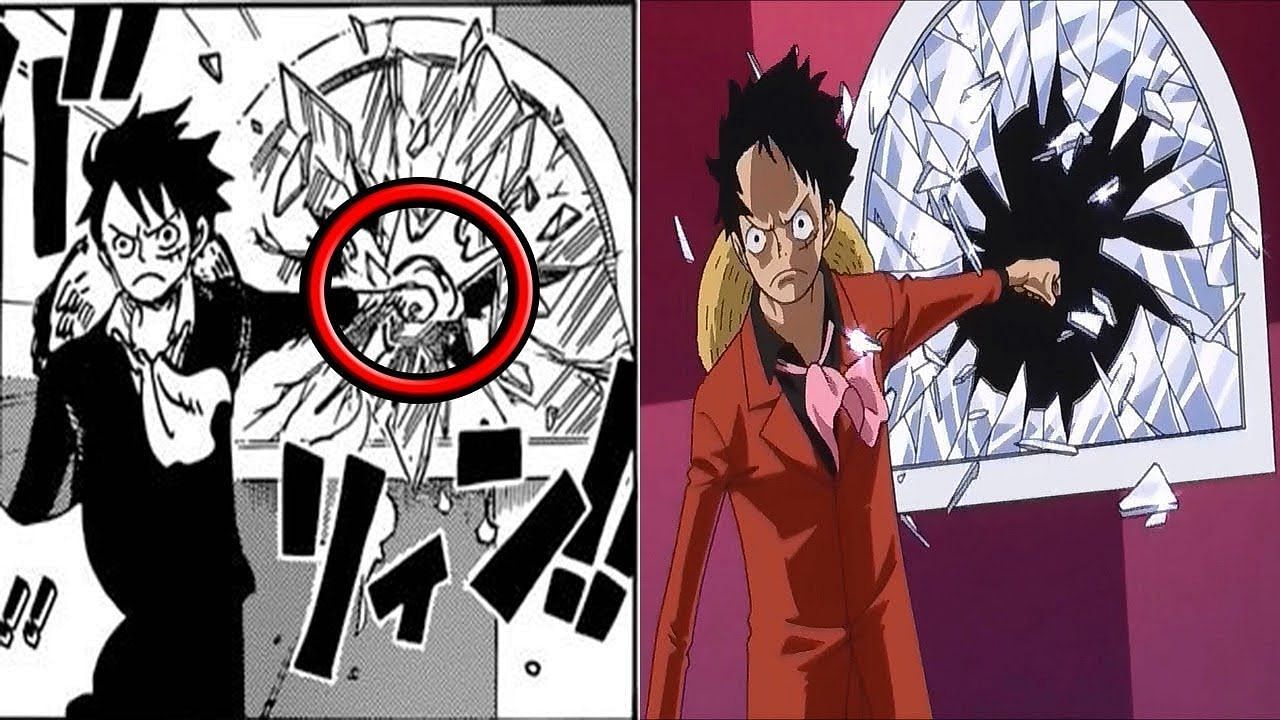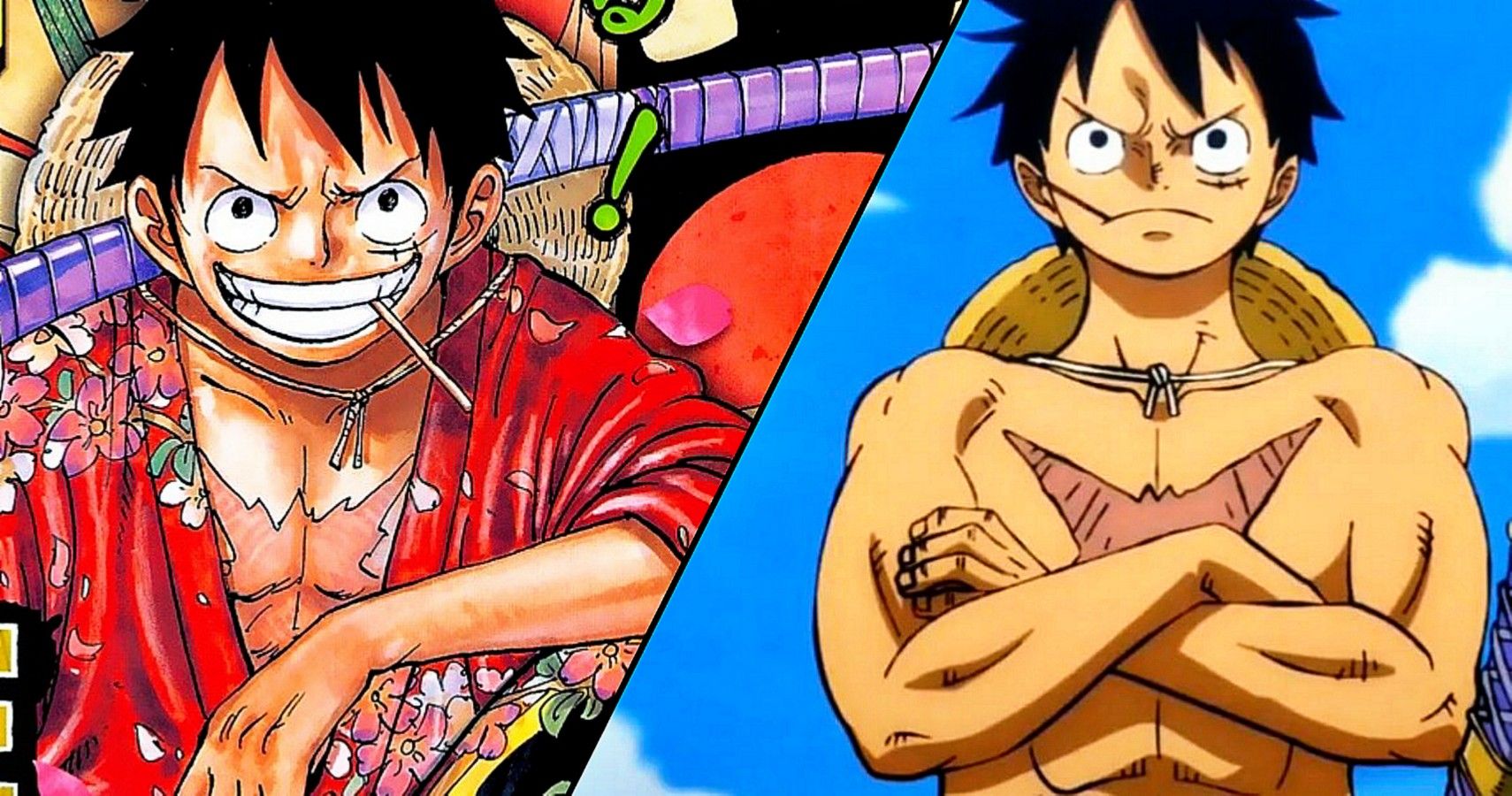One Piece anime vs manga? Yo, it’s a straight-up battle of epic proportions! We’re diving deep into the differences between the animated series and the original manga, from pacing and plot twists to character development and art styles. Get ready to geek out as we break down everything that makes each version unique and totally awesome.
This ain’t your average anime vs. manga comparison. We’re tackling the major story arcs, dissecting character changes, and comparing the visual styles in detail. We’ll even drop some juicy insights into how fan reception has shaped the One Piece universe. So grab your favorite Straw Hat and let’s get this party started!
One Piece: Anime vs. Manga – A Hype Comparison: One Piece Anime Vs Manga
Yo, One Piece fans! Let’s dive deep into the epic clash of titans: the anime and the manga. We’re breaking down the major differences, from story pacing to character development and art styles. Get ready for a totally rad comparison!
Story Differences: Anime vs. Manga

The anime and manga, while telling the same core story, totally diverge in pacing and content. The anime often stretches out arcs with filler, while the manga keeps it tight and punchy. This leads to some serious plot deviations and character development changes.
For instance, the Alabasta arc in the anime features a bunch of filler episodes that, while entertaining, don’t add much to the main storyline. The manga, however, keeps things focused on Vivi’s struggle and Luffy’s fight against Crocodile. This difference in pacing changes the overall feel of the arc.
Here’s a table comparing major story arcs, highlighting key differences:
| Arc Name | Manga Events | Anime Events | Differences |
|---|---|---|---|
| Alabasta | Vivi’s rebellion, Crocodile’s defeat, focus on political intrigue. | Added filler arcs featuring new characters and adventures. | Anime significantly slows down the pace with filler, altering the tension and pacing of the main plot. |
| Water 7/Enies Lobby | Franky’s introduction, CP9’s plot, intense battles, and the Straw Hats’ emotional journey. | Similar events, but with more drawn-out fights and added filler episodes focused on the Galley-La company. | Anime expands on the side stories, adding emotional weight but also stretching out the arc’s overall length. |
| Thriller Bark | Introduction to Gecko Moria, intense battles against zombies, and the crew’s growth in facing fear. | Includes several filler episodes focusing on the Straw Hats’ interactions with the island’s inhabitants and additional side quests. | The anime softens the horror elements and adds lighthearted moments, contrasting with the manga’s darker and more intense tone. |
Character Development: Anime vs. Manga

While the core personalities remain consistent, the anime sometimes adds layers or tweaks to characters. Luffy’s goofy charm is amplified in the anime, while Zoro’s stoicism is sometimes softened. Nami’s resourcefulness is highlighted in both, but the anime might add more emotional depth to her backstory.
For example, the anime occasionally gives minor characters more screen time and development. This can enhance their impact on the story, or sometimes just feel like filler. Consider the character of Kaya from the Syrup Village arc; the anime provides more insight into her relationship with Usopp.
Here’s a quick character profile comparison:
- Luffy:
- Manga: Driven, impulsive, unwavering determination.
- Anime: More comedic timing, slightly more naive but still determined.
- Zoro:
- Manga: Stoic, loyal, intensely focused on his goals.
- Anime: More expressive, still loyal but with some moments of humor.
- Nami:
- Manga: Clever, resourceful, fiercely protective of her crew.
- Anime: More emotional vulnerability shown, particularly regarding her past trauma.
Art Style and Animation: Anime vs. Manga, One piece anime vs manga
Eiichiro Oda’s manga art is expressive and dynamic, with a unique character design and panel layouts. The anime tries to capture this style, but the animation choices can sometimes fall short. The level of detail in the manga is unparalleled, while the anime focuses on creating fluid action sequences.
Let’s compare a specific scene: Luffy’s Gear Second debut. In the manga, the speed and power are conveyed through paneling and Oda’s dynamic art. The anime uses fast-paced animation, vibrant colors, and visual effects to create a similar impact, but the raw energy of the manga is harder to replicate.
Notice kimi ni todoke manga for recommendations and other broad suggestions.
Here’s a table comparing fight choreography:
| Battle | Manga Style | Anime Style | Visual Impact |
|---|---|---|---|
| Luffy vs. Lucci | Dynamic paneling, intense close-ups, showcasing the power and speed of the fight. | Fluid animation, vibrant colors, dramatic camera angles, special effects. | Both are visually stunning, but the manga emphasizes raw power through art, while the anime enhances the spectacle with animation. |
| Zoro vs. Kaku | Detailed swordsmanship, showcasing the precise movements and force of each strike. | Fast-paced action sequences, highlighting the speed and power of the sword fighting. | The manga excels in detailing the technical aspects of the fight, while the anime focuses on visual flair. |
Overall Experience: Anime vs. Manga
Both mediums offer unique strengths. The manga provides a more intimate and detailed experience, allowing for a deeper connection with the characters and story. The anime, on the other hand, provides the immersive experience of sound, music, and vibrant animation.
The target audience can differ slightly; manga readers often appreciate the detailed artwork and faster pacing, while anime viewers enjoy the visual spectacle and voice acting. The music and sound effects in the anime significantly enhance the emotional impact of scenes, something the silent manga cannot replicate.
Let’s compare the emotional impact of Luffy’s declaration of war against the World Government at Marineford:
The manga’s depiction of this moment relies on Oda’s powerful artwork and the weight of the preceding events. Luffy’s determined expression, the gravity of the situation, all create a powerful image.
The anime enhances this moment with epic music, dramatic sound effects, and intense voice acting. The visual spectacle and audio elements create a truly breathtaking experience.
Fan Reception and Impact: Anime vs. Manga
The differences between the anime and manga have fueled countless fan discussions and theories. Some fans prefer the tighter narrative of the manga, while others enjoy the expanded world-building and character development in the anime, even with filler. The different adaptations cater to different preferences and have contributed to the enduring popularity of One Piece.
Both the anime and manga have played a massive role in the global success of One Piece. The anime’s widespread availability introduced the series to a broader audience, while the manga’s consistent quality and detailed storytelling have built a dedicated fanbase that has fueled the franchise’s longevity.
Ultimately, the “better” version—anime or manga—really boils down to personal preference. Both mediums offer a unique and captivating experience. The anime brings the vibrant world of One Piece to life with stunning animation and an epic soundtrack, while the manga delivers a raw, unfiltered storytelling experience. Whether you’re a seasoned One Piece veteran or a curious newbie, there’s something here for everyone.
So, which side are you on? Let the debate rage on!

